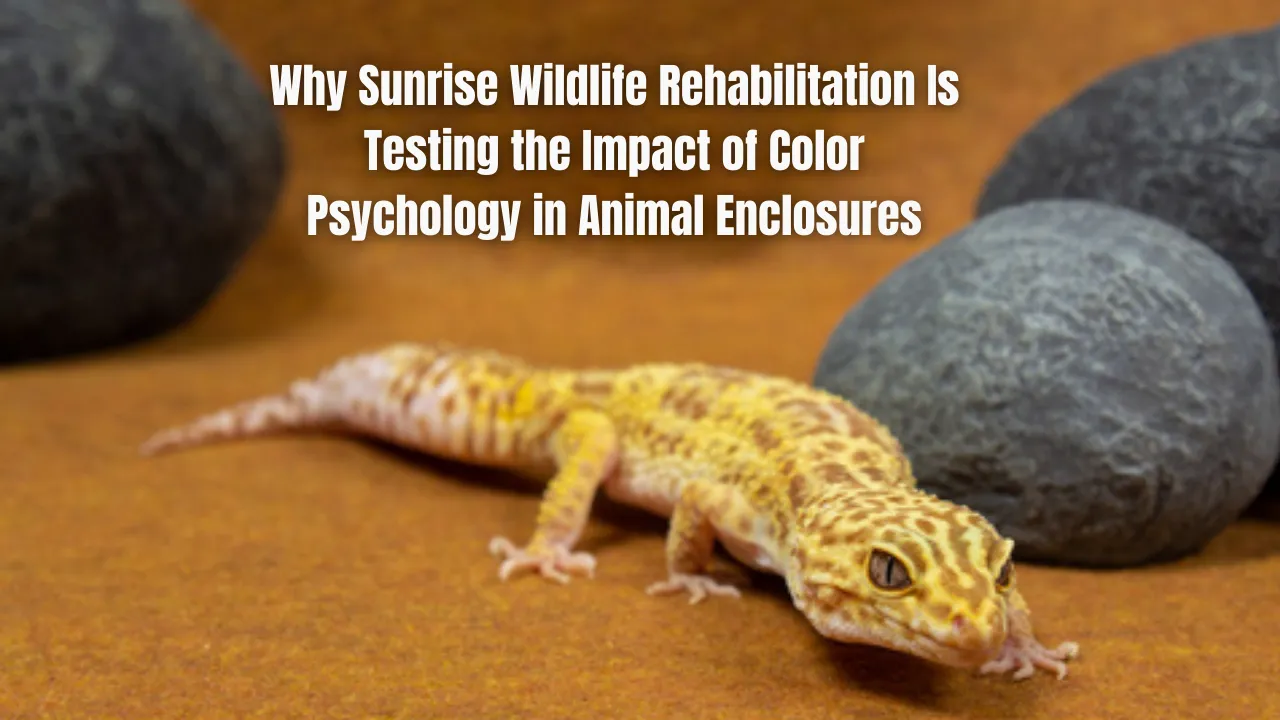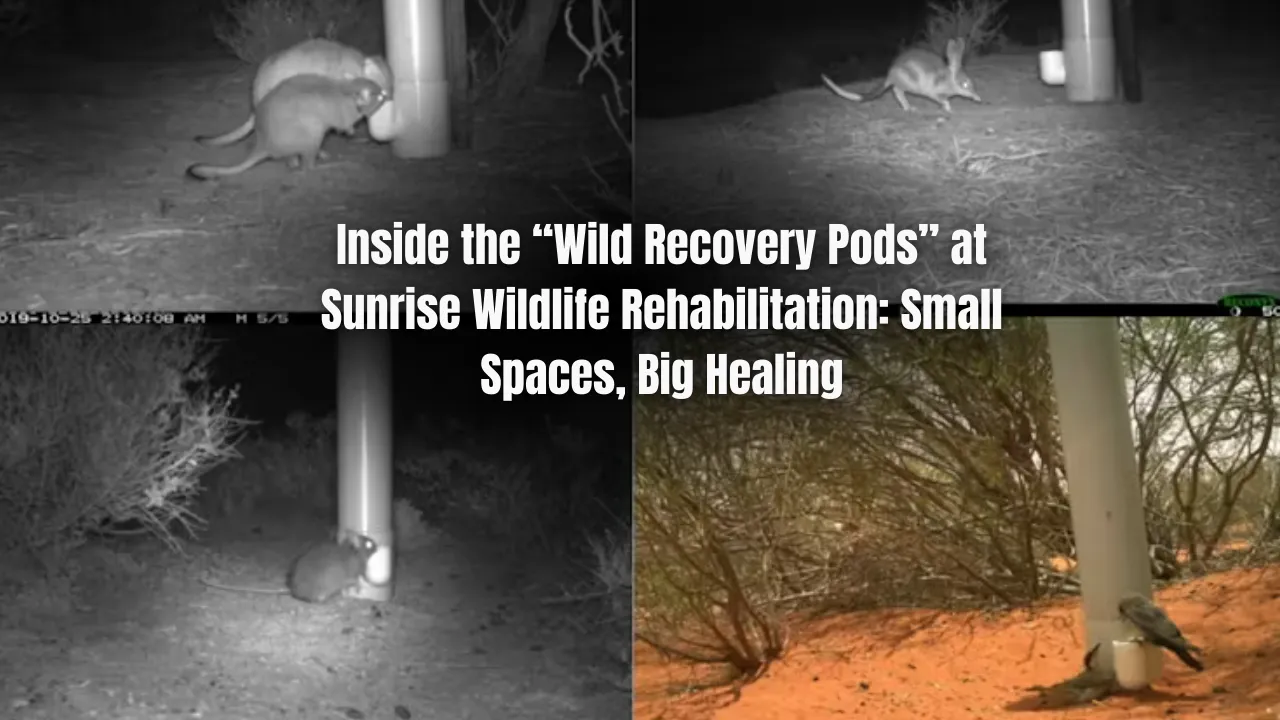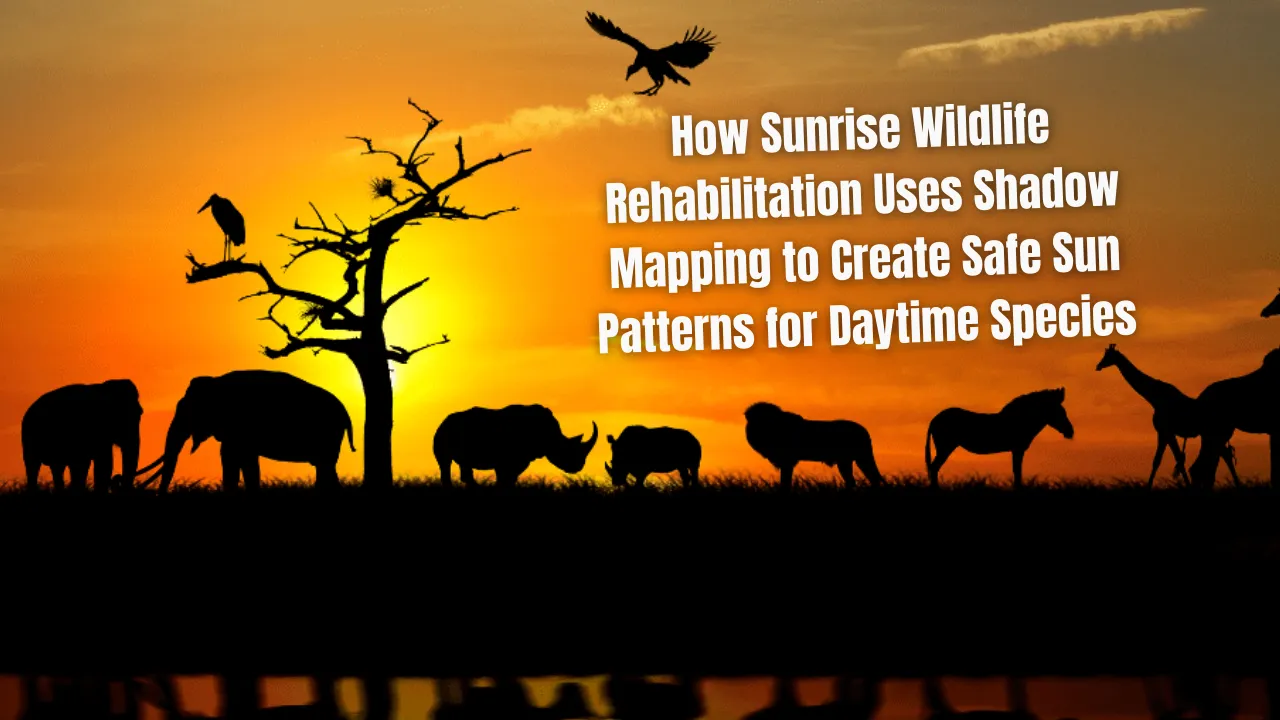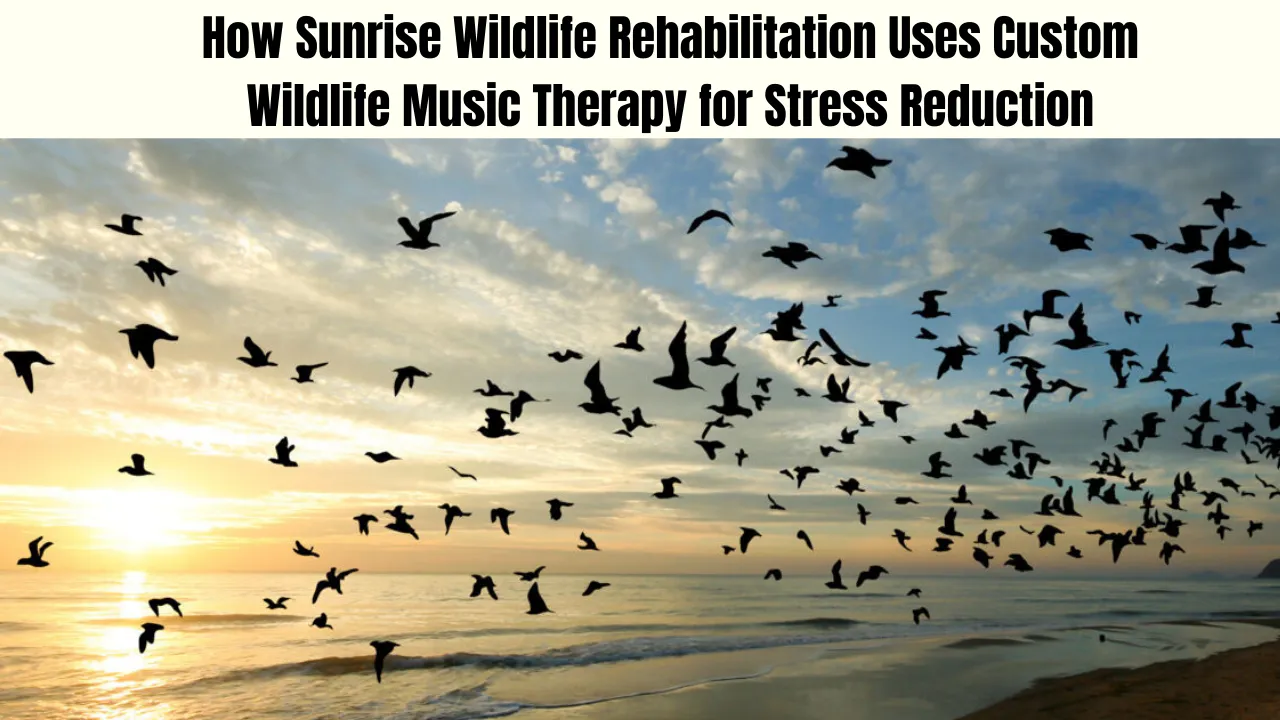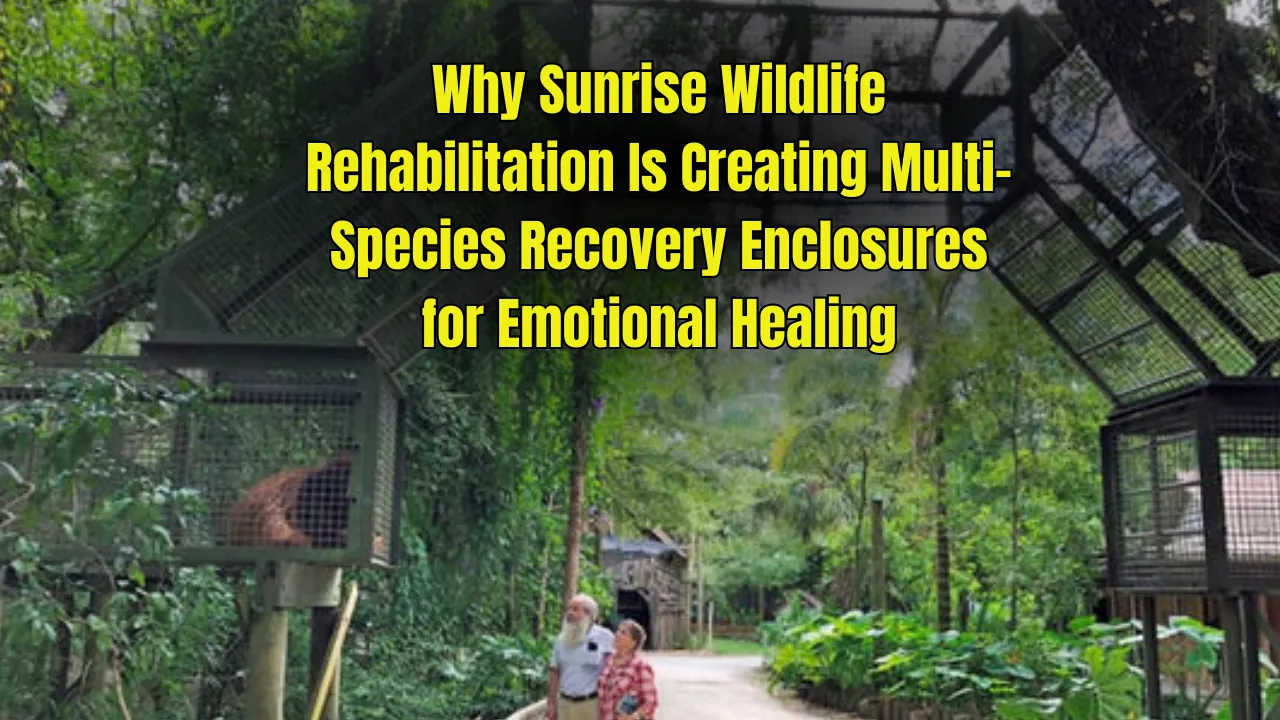Color psychology in animal enclosures isn’t just a trendy idea; it’s becoming a serious subject in modern wildlife rehabilitation. At Sunrise Wildlife Rehabilitation, the staff is rethinking how enclosures are designed—not just in terms of size and safety, but through the subtle power of color. With so many rescued animals coming in stressed or traumatized, the team is exploring how color might be a silent healer in their recovery process.
This article dives into why Sunrise Wildlife Rehabilitation is focusing on this unique approach. You’ll get an inside look at how color psychology is being applied to animal care, what species are showing positive responses, and how this could shape the future of animal rehabilitation across the board.
The Importance of Color Psychology in Animal Enclosures
Using color psychology in animal enclosures is a forward-thinking strategy aimed at improving the emotional and physical health of rescued wildlife. This involves testing how certain colors influence behaviors such as rest, aggression, playfulness, and appetite. At Sunrise Wildlife Rehabilitation, different colored environments are being used to reduce fear and encourage healing in a natural, non-invasive way. Unlike traditional enclosure designs focused solely on safety and containment, these new color-based environments are about enriching animal lives. This subtle, sensory-based method adds another layer of care that could redefine best practices in wildlife recovery efforts.
Overview of Color Psychology Implementation at Sunrise Wildlife Rehabilitation
| Aspect | Details |
| Focus Area | Enclosure colors and lighting environments |
| Primary Goal | Improve emotional well-being and behavioral outcomes in rescued animals |
| Species Involved | Birds, small mammals, reptiles, and amphibians |
| Colors Being Tested | Blue, green, yellow, orange, red, neutral tones |
| Initial Findings | Positive behavior shifts with calming tones in most species |
| Long-Term Objective | Establish color-based rehabilitation standards for broader application |
The Science Behind Color Psychology in Animal Enclosures
Color psychology isn’t a new concept in human psychology, but applying it to animals is a fascinating twist. Animals experience the world through different sensory lenses, and their reactions to color can vary based on their species, vision capabilities, and past traumas. Sunrise Wildlife Rehabilitation is studying these responses in real-time, noting how colors influence mood and interaction.
For example, mammals like opossums and squirrels tend to show reduced signs of stress in blue and green environments. These colors simulate calm, natural settings and appear to reduce hypervigilance. Birds, on the other hand, are more visually sensitive and respond positively to warmer tones like yellow, which can encourage curiosity and activity. This strategic use of color isn’t arbitrary—it’s guided by species-specific research and continuous observation.
Why Sunrise Wildlife Rehabilitation Is Exploring Color Psychology
Sunrise Wildlife Rehabilitation is not just experimenting for curiosity’s sake. Their goal is to improve outcomes for every animal that comes through their doors. Many of these animals arrive frightened, injured, or disoriented. Traditional enclosures, while functional, don’t address the emotional side of recovery. That’s where color psychology in animal enclosures becomes a powerful tool.
The facility’s caretakers observed that animals housed in brighter, carefully color-themed spaces adapted more quickly. They ate sooner, showed fewer signs of distress, and engaged more readily in social or exploratory behavior. This led the team to design a full-scale study to determine which colors best promote healing, calmness, or stimulation, depending on the species and condition of the animal.
How Different Colors Affect Animals
Color plays an unseen but powerful role in how animals behave and recover. Sunrise’s tests have uncovered some promising patterns:
- Cool Tones (Blue, Green, Lavender): These are used to calm animals that exhibit signs of anxiety or fear. Species like foxes, raccoons, and small birds show a drop in pacing, a common stress behavior, when surrounded by these shades.
- Warm Tones (Yellow, Orange): These seem to energize animals that are lethargic or recovering from injury. Songbirds and baby mammals housed in warmer-toned areas tend to be more curious and responsive.
- Neutral Shades (Beige, Light Gray): Often used for animals requiring low-stimulation environments, such as nocturnal species or those with trauma histories.
- Avoidance of Red and Harsh Hues: Red, especially in predators, can trigger stress or aggression. It is generally avoided unless testing specific behavioral responses.
These color choices are often combined with environmental enrichment—objects to climb, forage, or interact with—to encourage natural behavior and speed up recovery.
Benefits of Color Psychology in Animal Enclosures
The positive impacts of color-based enclosure designs are already being seen across several departments at Sunrise:
- Faster Recovery: Animals in carefully colored environments return to natural behavior sooner, which often means earlier release.
- Stress Reduction: Calm surroundings lessen aggressive or fearful responses, reducing injury risks for both animals and staff.
- Increased Interaction: Animals become more social and less fearful, especially those in group enclosures.
- Data-Driven Progress: Every color change is tracked, offering real-time behavioral data that helps refine the approach.
These results could help develop new industry standards in wildlife care, particularly for animals that don’t respond well to traditional rehabilitation environments.
Challenges and Considerations
Though results are promising, implementing color psychology in animal enclosures isn’t without its challenges. Not all animals perceive color the same way. Reptiles, for example, rely more on heat than sight, and amphibians are more responsive to light intensity than to hue.
Another factor is ensuring that changes to enclosure colors do not interfere with the animal’s sense of safety or camouflage. For prey animals, overly bright or unnatural colors could increase anxiety rather than reduce it. Sunrise’s team works closely with animal behavior specialists to create a balance between innovation and instinctive needs.
There’s also the challenge of cost. Repainting and redesigning enclosures is an investment, especially for non-profit organizations. However, the potential to improve success rates makes it a long-term gain.
Results and Early Observations
Since launching the project, Sunrise Wildlife Rehabilitation has documented notable improvements:
- Reduced Incidence of Stress Behavior: Pacing, overgrooming, and excessive hiding have decreased in over 70% of cases.
- Improved Feeding Response: Animals are more likely to eat consistently in color-optimized enclosures.
- Better Sleep-Wake Cycles: Adjusting not just the color but the light tone has improved rest, especially in nocturnal animals.
- Faster Socialization: Group-housed animals, particularly young birds and mammals, interact more calmly and frequently in soothing color environments.
These findings are being compiled into a broader study the center hopes to publish and share with other rehabilitation and conservation institutions.
Key Color Strategies Used in Sunrise Enclosures:
- Cool Colors for Calm:
Blue, green, and lavender are applied in enclosures to create relaxing, low-stress environments for anxious animals. - Warm Colors for Energy:
Yellow and soft orange are used where more stimulation is needed, particularly in younger animals or birds learning to forage and explore.
FAQs:
1. Can color really affect animal behavior in enclosures?
Yes, just like humans, animals can react emotionally to colors, which influence their mood and activity levels.
2. Do all animals respond to color in the same way?
No. Different species perceive and respond to colors differently, depending on their vision and instincts.
3. Why avoid using red in enclosures?
Red can be overstimulating or even stressful for many animals, especially carnivores, and is generally avoided unless specifically needed.
4. Is color psychology used in zoos or only in rehabilitation centers?
While still emerging, color psychology is beginning to gain interest in both zoos and wildlife recovery centers.
5. How does Sunrise measure the success of color changes?
Through detailed observation logs, behavior tracking, and health recovery timelines across varied animal groups.
Final Thought
Sunrise Wildlife Rehabilitation is leading a quiet revolution in wildlife care by putting color psychology in animal enclosures at the heart of healing. Their work reveals how a simple shift in hue can unlock more peaceful, responsive, and healthier animals. It’s not about making enclosures pretty—it’s about using every possible tool to give wild animals a true second chance.
If you’re passionate about animals or work in wildlife conservation, this approach offers powerful inspiration. Don’t just care—care wisely. Feel free to share your thoughts or experiences in the comments.
